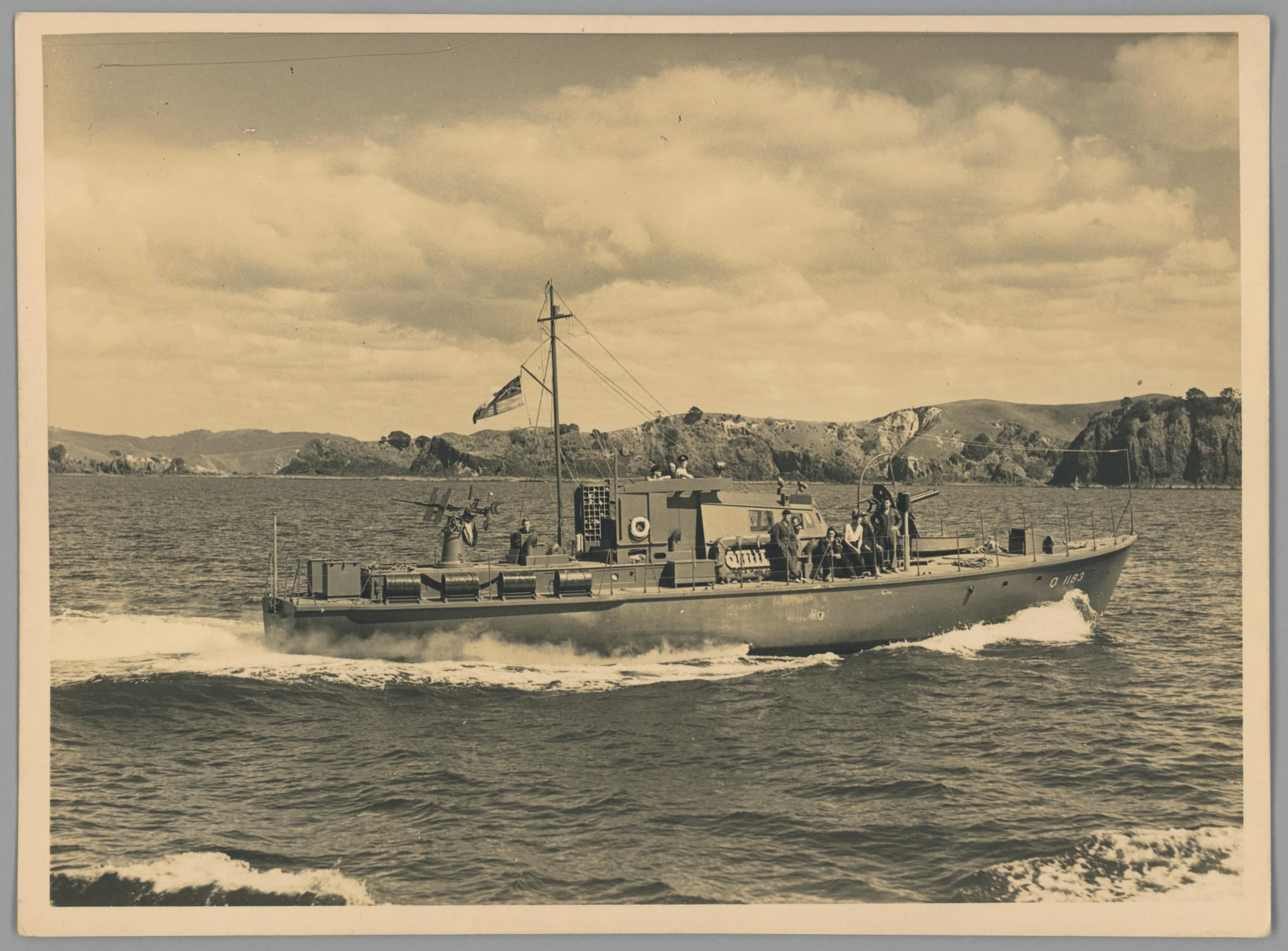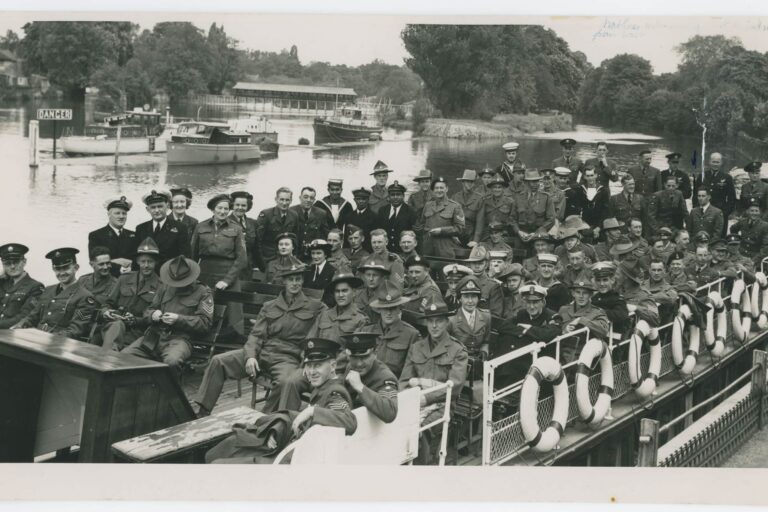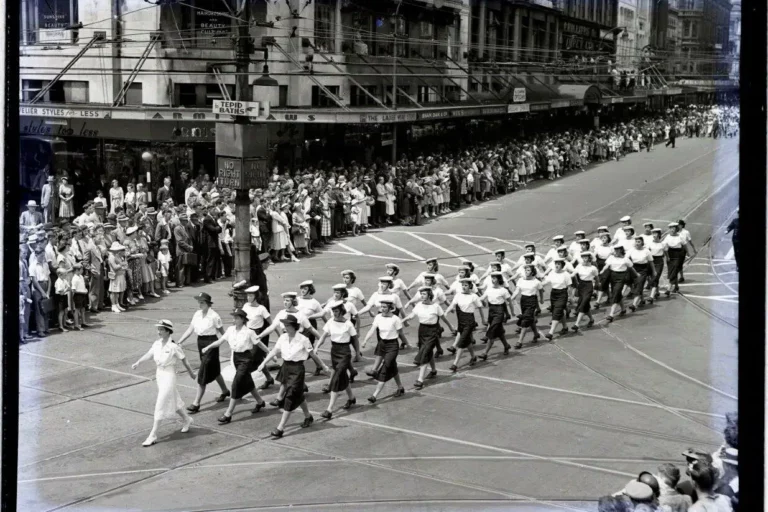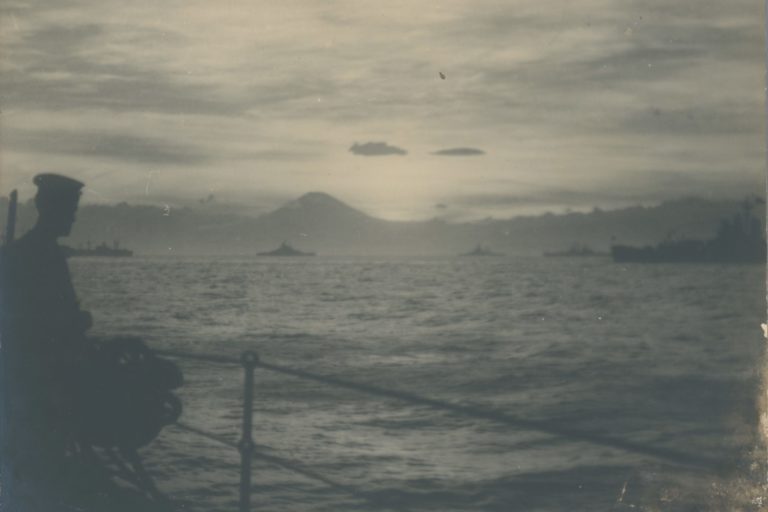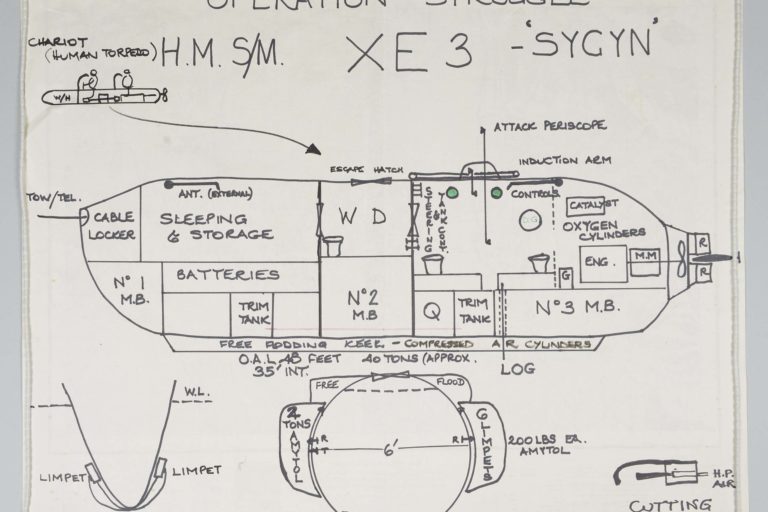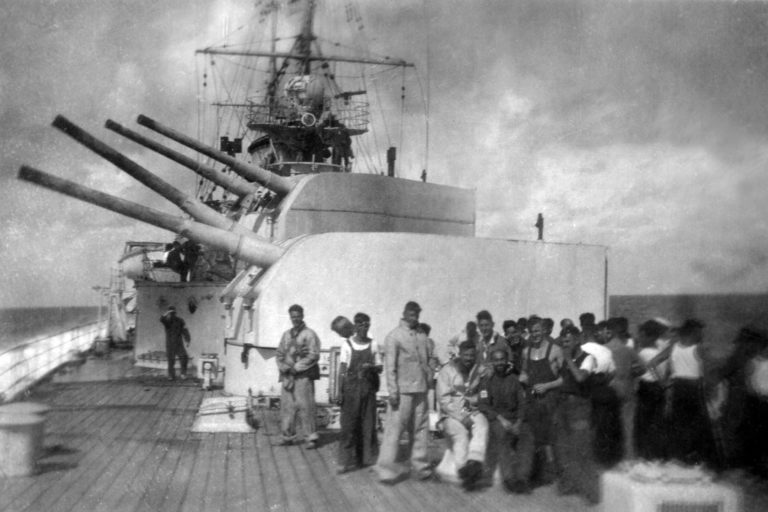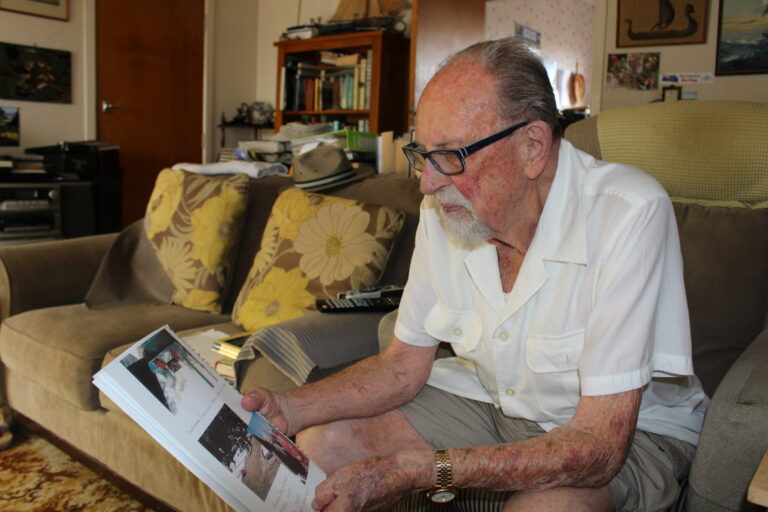The Harbour Defence Motor Launch (HDML) was designed by the Admiralty in 1939 for harbour patrols and anti-submarine duties. It became apparent early in the Second World War that a small type of vessel was needed for harbour protection, coastal patrol, and anti submarine work in New Zealand waters. In February 1942 HDMLs 24 were ordered, including HMNZS Mako.
Ship Details:
Type: Harbour/Seaward Defence Motor Launches
Displacement: 54 tonnes
Dimensions: 22 x 21.3 x 4.8 x 1.6m
Builder: Madden & Lewis, San Francisco
Machinery: 2 x shaft Grey Diesels bhp 330 = 10-12 knots
Wartime Armament:
2 x 50cal machineguns
1 x 20mm Oerlikon
2 x twin mounted Vickers machineguns
8 x depth charges
ASDIC
Peacetime: Unarmed
Complement: 10 officers and ratings
Pennant No: Q1183 as HDML 1183
P3551 as HMNZS Mako
As HDML Q1183
Ordered: 21 February 1942
Completed: 11 November 1942
Entered Service: 9 March 1943 as HDML Q1183
Paid Off: September 1945
As HMNZS Cook 1948, then Maori 1949, renamed Mako 1955
Taken up for service: 22 May 1948 as Cook
Disposed: 29 March 1976 as Mako
Ship History:
The Harbour Defence Motor Launch (HDML) was designed by the Admiralty in 1939 for harbour patrols and anti-submarine duties. Many navies during the Second World War built HDMLs for patrol duties between 1940 and 1945. The Australian version was slightly longer at 24m and was reputed to have excellent sea-keeping qualities and was very robust while in service. Canada was the only major navy not to have built HDMLs. It became apparent early in the Second World War that a small type of vessel was needed for harbour protection, coastal patrol, and anti submarine work in New Zealand waters. These vessels would need adequate speed and range, to be sufficiently armed and to carry depth charges for anti submarine work.
In January 1942 the Admiralty agreed with the New Zealand government to allocate HDMLs to the RNZN. In February 1942 24 were ordered. Only 22 were to be supplied twelve by the United States under the Lend-Lease programme and ten from Britain. The provision of these vessels from Britain was abandoned and all the HDMLs for the RNZN were to be supplied from builders on the west coast of the United States. This was due to the loss of one of the HDMLs when the ship carrying it was sunk by a U-Boat in July 1942. The vessels were completed between November 1942 and February 1943 but there were delays as the Grey diesel engines were required for the landing craft to be deployed for Operation NEPTUNE. The last four HDMLs were found to be unsatisfactory and needed further work before they could be delivered to New Zealand. The completed HDMLs were handed over to the United States Navy (USN) for delivery to the RNZN. Sea and ASDIC trials were undertaken in a partially equipped state as no armament had been fitted. The HDMLs would be sent to New Zealand as deck cargo on freighters as space became available as per the schedule below:
1183, 1184 via SS Frank Joseph Irwin arrived Wellington 118 January 1943
1185, 1186 via SS Pere Marquette arrived Wellington 5 March 1943
1187-1190 via SS Kootenay Park arrived Wellington 30 April 1943
1191-1194 via Mount Robson Park arrived Auckland 25 August 1943
1348-1351 arrived 28 February 1944
Upon arrival they were unloaded using a floating crane and then underwent full commissioning trials. The HDMLs were to take over from the NAPS vessels and were to be deployed at Auckland and Wellington as anti-submarine vessels. The last six of the 22 allocated were transferred to the RAN in October 1943 as they were not required in New Zealand. The first HDMLs to arrive did work-ups in the Marlborough Sounds and Wellington before they were deployed to Auckland.
With the allocation of HDMLs to the RNZN the Admiralty also allocated Flotilla numbers as below:
124th Motor Launch Flotilla
Based: in Auckland from April 1943 – disbanded after last HDML paid off
HDMLs 1183 transferred to 125th Flotilla July 1944 – detached to Dunedin
Service with the RNZN:
By end of 1943 both the 124th and 125th Flotillas were operating in Wellington and Auckland. There was a proposed 126th ML Flotilla to be based at Lyttleton using HDMLs 1348-1351 but the delay in shipping to New Zealand and the improved war situation meant that the flotilla was never formally established and those HDMLs were allocated the 124th Flotilla. On 6 September 1943 1186 recorded an ASDIC contact off Cape Brett and dropped depth charges but there was no evidence a submarine was present. There were many contacts that were false signals.
In August 1944 it was proposed that one HDML be sent to serve in Fiji. In November 1944 1184 departed Auckland for Suva escorted by Viti. In October the Admiralty requested that the HDMLs equipped with the Grey diesel engines be deployed with the British Pacific Fleet at the Forward Area which was the Manus Island naval base in the Admiralty Islands. HDMLs 1183-1194 were accepted for service on 8 November 1944 and they were refitted for tropical service in December 1944. 1348 was detached for service in Fiji to replace 1184 which was escorted back to Auckland by HMNZS Kiwi in December 1944 who escorted 1348 to Fiji in January 1945.
By March 1945 there were six HDMLs at Auckland and Wellington awaiting orders to depart for Manus Island. The 124th Flotilla departed 12 April 1945 and reached the Forward Area via Norfolk Island and Noumea. Unfortunately not much is known about their service at Manus Island as it does not rate a mention in the official history. 1348-1351 were to be reformed as the 125th Flotilla. In May 1945 the Admiralty advised that the other six refitted HDMLs were not now required for the British Pacific Fleet. They returned to patrol duties as well as boom gate shipping control, exercises and other duties that RNZN could find a use for these vessels. In June 1945 1192-1194 transferred to Wellington to join 1191 to re-establish the 125th Flotilla.
In June 1945 the HDMLs began to arrive in Auckland for paying off. On 13 September 1945 the 125th Flotilla was disbanded. In Auckland the HDMLs not paid off yet were used a boom control launches. 1348 returned from Fiji in November 1945. Most of the HDMLs were laid up at Pine Island but 1184 was commissioned for service with HMNZS Philomel in November 1945. Six HDMLs were to be retained by the RNZN.
Post War Service
Q1183 arrived in Auckland in June 1945 for paying off and disarming and was laid up at Pine Island. It was intended that it was to be disposed of by the government board responsible for war surplus for all three services. The public realised the value of these vessels and there was a lot of interest in purchasing a vessel at a bargain price. However Q1183 was kept in operational reserve and would return to naval service.
In mid 1945 the RNZN was asked support the Marine Department’s Fisheries Division patrols. In November 1945 three HDMLs were selected including Q1183 but the rapid demobilisation of the RNZN left a shortage of personnel to man the vessels. On 15 July 1946 Q1183 was commissioned and for the next 28 years was involved in patrols in the Auckland region and wider New Zealand waters. In 1948 Q1183 was renamed HMNZS Cook and then in 1949 HMNZS Maori. In 1948 the Admiralty reclassified these vessels as Seaward Defence Motor Launches [SDMLs] and in August of 1949 the RNZN followed suit.
There was also a renumbering of the vessels which does cause some confusion when following the history of their service. Q1183 was renumbered to P3551 in March 1950. On 21 August 1950 P3551 was decommissioned and was assigned to the ‘Tamaki Run’. This was transporting personnel and stores to and from the training establishment HMNZS Tamaki on Motuihe Island. P3551 returned to Fisheries Patrol work when she was recommissioned on 26 January 1951. She carried on patrol work and in September 1954 the term Fisheries Protection Squadron came into use. The former HDML P3552 [Q1184] was commissioned and joined in the patrol work. After approval in June by the Navy Board in July 1955 P3551 was renamed HMNZS Mako [shark] and P3552 was renamed Paea. In 1956 Mako & Paea made a six week tour of small North Island ports in October and November. Some of these ports had not had a naval vessel visit for more than 100 years. During a refit in 1958 the engines of Mako were replaced by Foden 12 engines [each a set of paired Foden 6 engines] of 220 bhp but there was no noticeable increase in speed for the extra power produced. Radar was also fitted around this time.
Along with fisheries patrol work, Mako carried out guard boats for royal tours and visiting warships, attending Waitangi celebrations, SAR, whale tagging surveys and ferrying wildlife for the Wildlife Service to rodent-free islands. In 1961 both vessels carried out an eleven week patrol as far south as Fiordland. By the 1970s the SDMLs were showing their age. Mako was transferred to RNZNVR duties in 1972. The vessel served for twelve months then was sent for a refit. In 1975 Mako was decommissioned and dismantled and parts used to maintain the SDMLs still in commission. The National Museum of the Royal New Zealand Navy has some objects from the vessel in the museum’s object collection.
Colour Scheme:
During the naval service of the HDMLs and SDMLs there was a succession of colour schemes as follows:
Wartime
- Light grey overall
- Dark grey overall
1945-1950s
- Light grey overall
1960 to end of service
- Black hull, white boot-topping and strake, grey super structure
More to explore.


